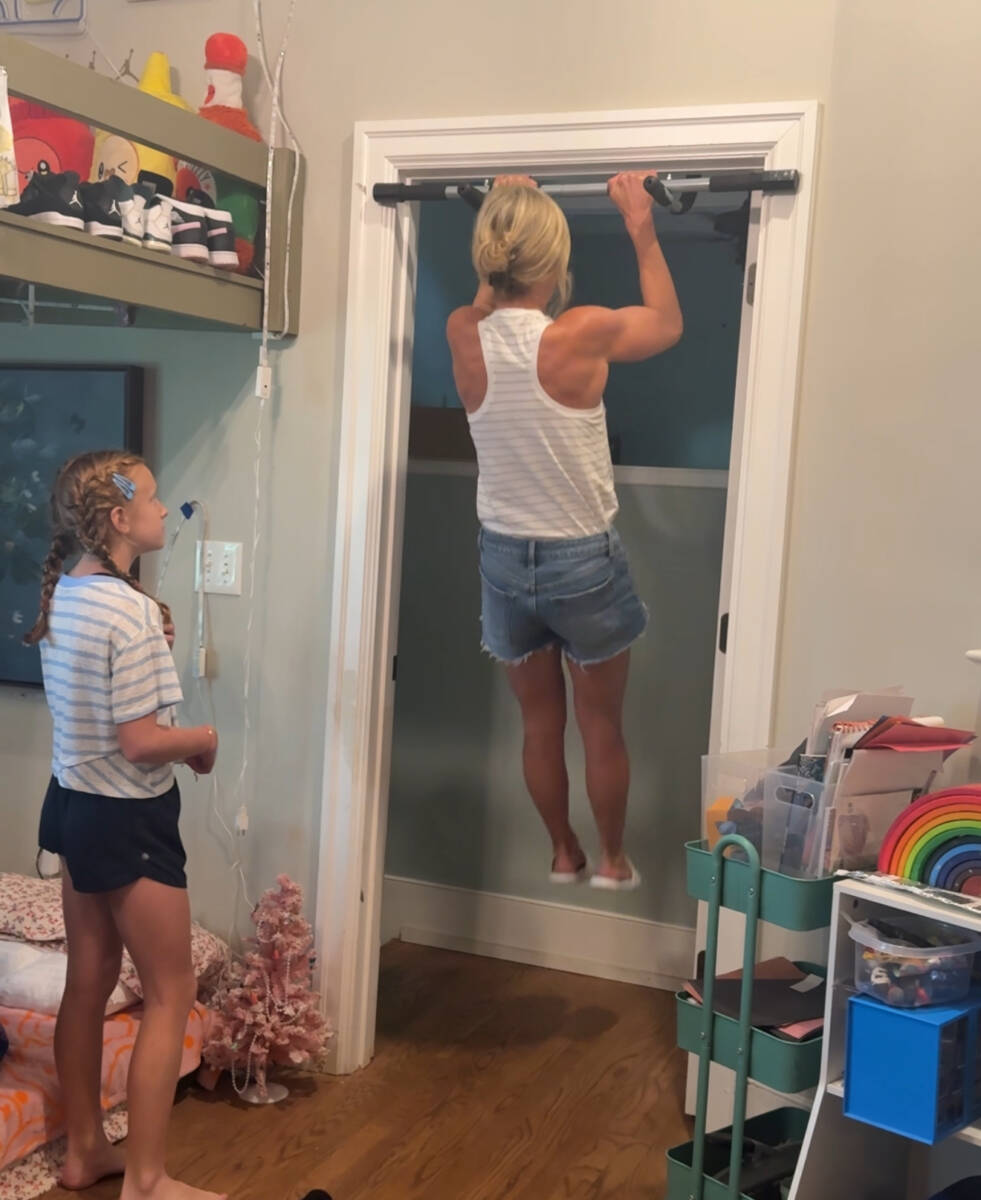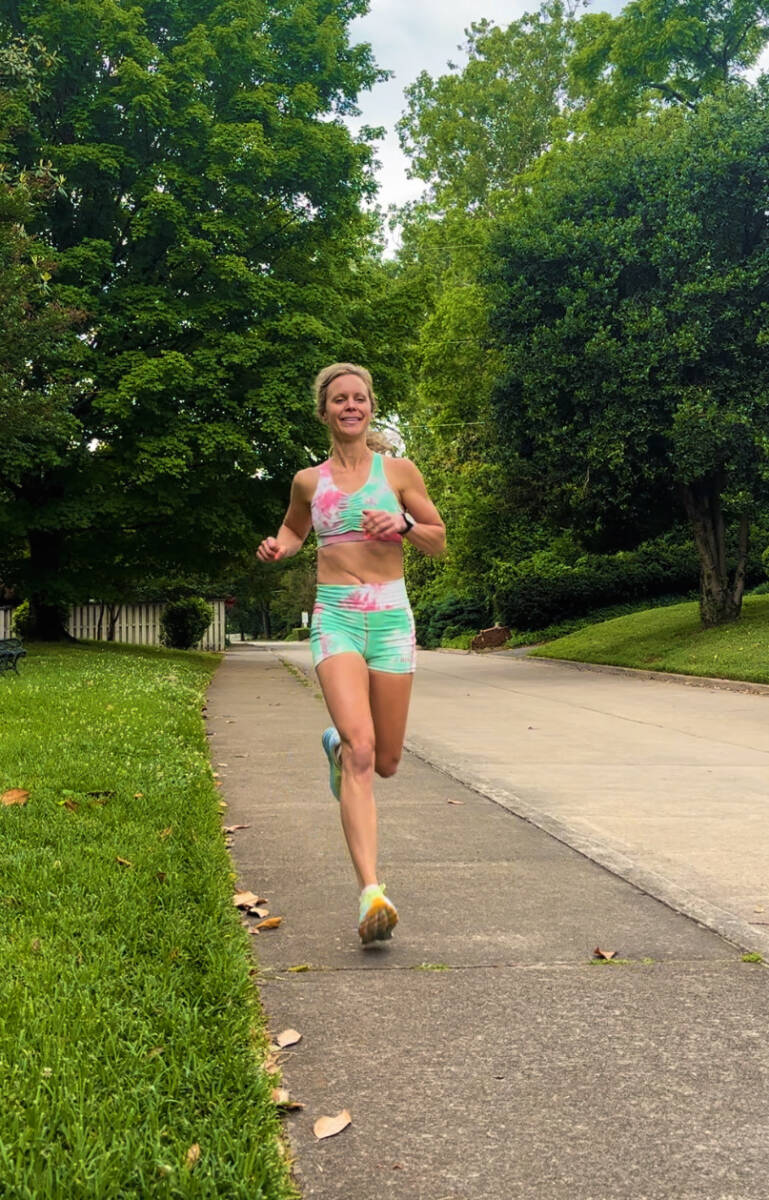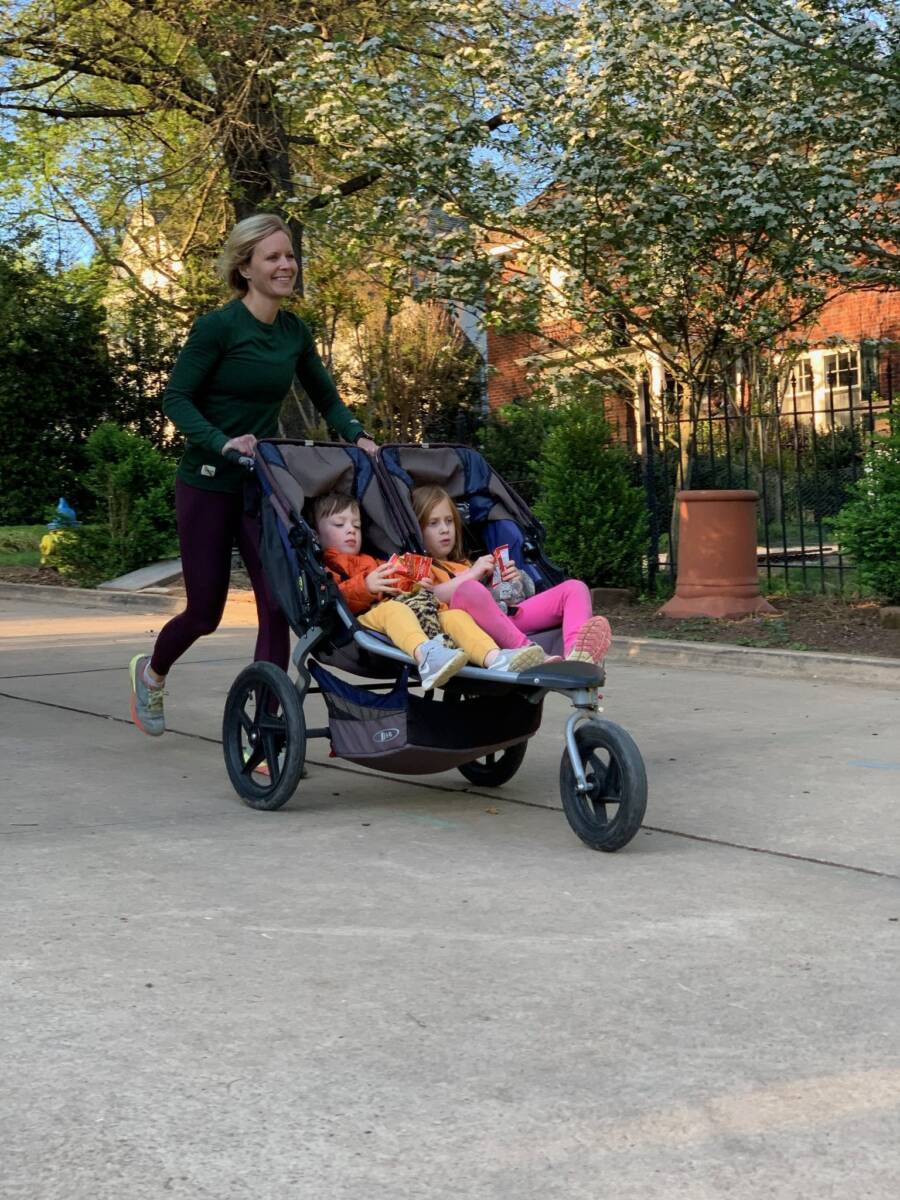How to Use “Micro Workouts” to Build Fitness & Strength
On a call for a Summer Challenge I am doing this summer with Dr. Holly Richard, I talked about the power of micro-workouts for consistency in exercise. It’s something I do often and really emphasize in my run coaching.

A couple of the challenge participants emailed me afterwards saying that the concept of a micro-workout was game-changing for them. They had assumed that they had to have this beautiful swath of 30 minutes or more to start exercising. But as moms, finding a half hour or more of uninterrupted time is akin to finding a unicorn. So, breaking up your exercise into small chunks can set you up for success in establishing a fitness habit and being overall healthier.
And that’s what a micro-workout is (also known as micro training and workout snacks): it is a larger workout broken up into smaller portions or doses throughout the day. Some will define a micro-workout as intense exercise such as a HIIT workout in less than 10 minutes. However, for me, micro-workouts are parts of a larger workout done throughout the day.
Table of contents
It is honestly the only way most moms, especially moms to little kids, can get their exercise in. If you scroll Instagram, I bet you see videos of moms exercising in random places or with kids hanging on them. That’s because they are doing it when they can, where they can. They honor PROGRESS over PERFECTION. Because, if we wait for perfection—the perfect moment or gym set-up or time slot, it will probably never happen.
So, in this article, I am going show you how you can use micro-workouts to make exercise a habit and reach your fitness goals.
How to Perform Micro-workouts
There has been research that shows that shows the health benefits of intense micro-workouts such as high-intensity interval training or cardio bursts. But that’s not what I am talking about here. I am talking about any sort of exercise when put together meets your daily or weekly exercise goal.
What does this look like? I’ll share how I use micro-workouts first.
How I use micro-workouts
I do micro-workouts every day. For me, running takes priority over strength training but strength training is still very important. So, I get my run done in the morning before my family wakes up, and then I set a goal of doing a total of 30 minutes of strength training or body work (think core, mobility, and bodyweight exercises) throughout the day.
For me, this may look like cycling through three leg exercises for about 10 minutes then doing pull-ups while I put away the laundry, the kids hang out in the playroom where the bar is, or every time I pass by it. I know that it takes me 10-15 minutes of doing 100 pull-ups so I may aim to do 100 pull-ups in a day plus 15 minutes of core broken up into 5-minute chunks here and there, for example. I keep bands and weights under my bed for easy access.
It doesn’t feel like a lot, but the results speak for themselves. I did a strength test with my physical therapist and 6 months after doing these micro-workouts I almost doubled my strength in key runner strength areas.
How my athletes do micro-workouts
I encourage my athletes I coach to do micro-workouts to fit their strength training in because for most, that is the first to get kicked to the curb for time-poor moms.
But I coach some really time-poor moms who have a hard time getting their runs in, too. And for them, we use micro-workouts to start building a fitness foundation, and perhaps more importantly, start building that fitness habit.
For example, I have an athlete who has struggled to fit in her 3-4 mile runs during the week due to a very demanding job and two littles at home. For her, we started owning doing what we can—even if that was running just a mile or for 10 minutes and doing that twice a day.
As she formed this habit, she started to see how she could create more time for herself by setting boundaries with her work, and also seeing it as worthwhile. Often, we think doing a little bit isn’t going to make a difference. But once she saw (and felt) the physiological changes in her body (like stronger muscles, tissues, and bones—more capillaries and mitochondria, and a stronger aerobic system) she was more apt to prioritize working out.
She also got a treadmill to make it easier to do what she could whenever she had a small workout window.
For her, the micro-workouts not only changed her body but also her mind to create more space for them. She saw that doing a little bit was still making a big difference.
What are the Benefits of Micro Workouts?
There are so many benefits of doing micro workouts, I can’t list them all here. So I will start with the three major benefits.
Habit-forming.
Doing micro-workouts cuts those grooves to make working out a habit. It forces you to put it to the front of your mind and start figuring out how to make exercise work in your busy life.
I have seen this time and again with athletes I coach who think they have no space in their day to work out. That’s not true. Sure, it’s not easy. But, it’s possible with creativity and forward-thinking.
It’s convenient and time efficient.
Breaking your workouts out throughout the day make working out quick and easy. No changing clothes. No driving to the gym or a place to run. You don’t need to shower. You do enough to build muscle or get that heart racing and then get on with your day.
Proven mental and physical health benefits.
Research shows it doesn’t take much exercise to boost your mood. And new research shows that even just 1-2 minutes of vigorous intermittent physical activity three times a week is enough to reduce the risk of all-cause and cancer mortality by 40 percent and cardiovascular mortality of almost 50 percent. Doesn’t that blow your mind?
Tips for Success for Doing Micro-Workouts
Here’s how to make micro-workouts work for you.
1. Buy into them.
Listen, I am telling you as a seasoned running coach and an elite master’s runner who is stronger than she has ever been, that micro-workouts work. They have worked for me, my athletes, and then can work for you. Step one is believing that they can make a difference.
2. Set a goal.
It’s so important to be working towards something—big picture and small. Your big picture goal could be that you want to be overall healthier, fitter, faster, run a marathon one day, etc. The small picture goal aka the process goal is what will get you there. This is the goal that defines your micro-workout and maps your path to your big goal.
- It could be that you run 3 times a week for a total of 30 minutes.
- Or that you do 3 days of strength training for a total of 30 minutes.
- It might be that you run a total of 20 miles in a week.
Whatever it is, it is important to have it and think about how you will execute it.
As a running coach, I suggest aiming for at least 3 times a week for a total of at least 30 minutes of aerobic exercise and 2 times a week for a total of 20 minutes of strength training. These goals are a tipping point for gaining fitness and creating an exercise habit.
Think about your plan: Say, if you don’t have 30 minutes in one go, can you do a run in the morning and then one at nap time or in the evening, for example?
3. Make it easy.
Create the path of least resistance for your micro-workout goal. Have all the equipment you need accessible like weights, bands, a pull-up bar, a treadmill, bike, etc. so that as soon as a window opens, you jump through it. Think through your day and identify times you could do your micro-workout.
For example, for me, I keep my workout equipment near the playroom because I know whenever my kids are playing is a time I can do strength work. My athlete got a treadmill and has isolated running during lunch and then in the evening after her kids are in bed as times to get some miles in.
4. Move on if you miss a day.
It’s so important that you know that falling off the plan and missing one, or even more days, doesn’t ruin your goal. Remember, you are seeking progress, not perfection. If something derails your micro workout goals, that’s ok. Tomorrow is a new day. Just move on and pick up where you left off. Don’t stress about what you missed. Your opportunity to get back on track starts today.
5. Stay consistent.
Change takes time. The key to achieving most goals is staying consistent—even when you start to doubt that you’re making a difference. Shut that voice up, stop over-thinking, and keep doing. Remember step 1—buy into the process.
It takes at least 4 weeks of working out 3 days a week consistently to start to feel and notice a change. It could take longer. But know that you are making a difference in your physical health. Chances are you may already have noticed a difference in your mental health. If you need help staying on track, start writing down the little changes you see. Are you less stressed? More confident or optimistic? More patient with your kids? Are you creating space to take care of yourself? All these in of themselves are worthwhile.
6. Use exercise apps, seek variety, and/or hire a coach.
Find fitness apps, youtube videos, or work with a running coach such as yours truly to help you know what workouts are best and keep you on track. I program strength exercises along with running workouts, and my athletes will break up the strength movements throughout the day.
Personally, I like to use Peloton for strength because it is time-based as well. So, if I know I have 10 minutes before we head out the door and it’s a core day, I can find a 10-minute core video, for example, on Peloton.
Working with a running coach can tell you what you need to do meet your running and strength goals and give you reassurance that what you are doing is ENOUGH. You can learn more about my run coaching here.
Do you practice micro-workouts?







Love reading your articles. Can you do one on shin splints please, and what to do etc about them.